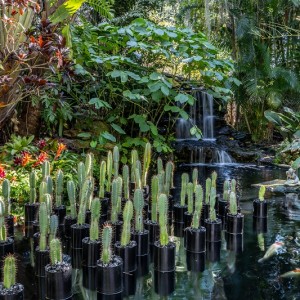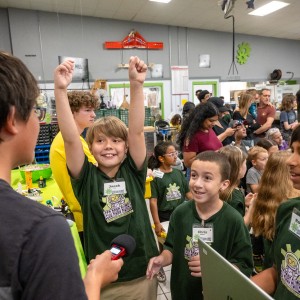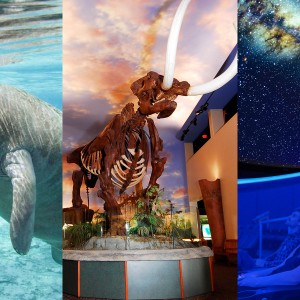The grounds of Nathan Benderson Park shimmered in promise as Dr. Michael Crosby took to the stage. The president and CEO of Mote Marine Laboratory and Aquarium beamed as a PowerPoint presentation showed off a rendering of a $100-million building that in a couple years will stand on the land. Mote wants a new aquarium—this one bigger and better located than the structure standing on City Island today, and capable of attracting more than double the current annual visitors in the first year alone.
But after the spectacle of a public announcement that promised a boost in tourism and a landmark attraction to market the region, Crosby spoke from his office about what really has him excited—the far nerdier dream of more research. Relocating an aquarium closer to Interstate-75 will bring economic gain to Mote Marine for sure, but the long-time scientist drools at the chance to loose some PhD-wielding marine biologists into the existing facilities to retool the amusement park show tanks and saltwater plumbing into the kind of drab, no-frills laboratory more the envy of academics. “That vision is really driving us to say let’s move the aquarium off the island,” Crosby says.
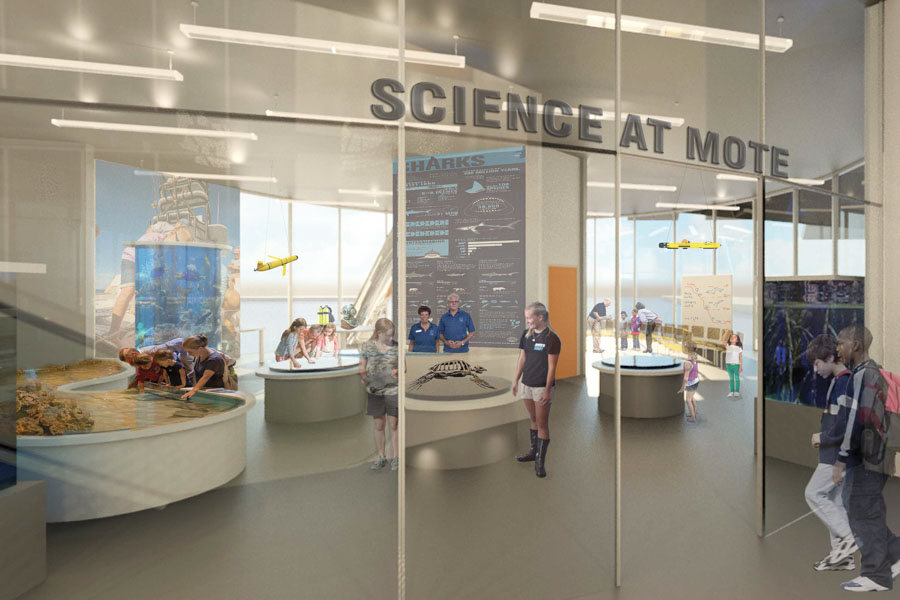
Mote’s long-term plans call for 10 more PhD-holding scientists on board by the year 2020, along with probably 100 more people in staff support positions, Crosby says. Having the chance to convert the Sarasota aquarium into a lab will allow that. Certainly, Crosby says, new wings and renovations will take place, all of which will only make the research campus more attractive. Ultimately, he’d like to bring academics, entrepreneurs and respected scientists together to create a “Silicon Valley of marine science.”
It’s a direct continuation of the “Blue Economy” effort launched by Gulf Coast Community Foundation in 2015. At the time, the foundation held a competition for startup pitches related to marine science-centered business; five of the finalists were connected to Mote. The institution doesn’t plan to walk away from City Island. It plans to revolutionize facilities there, all the while creating a new landmark attraction in University Park that brands the region as a haven for knowledge about the sea.
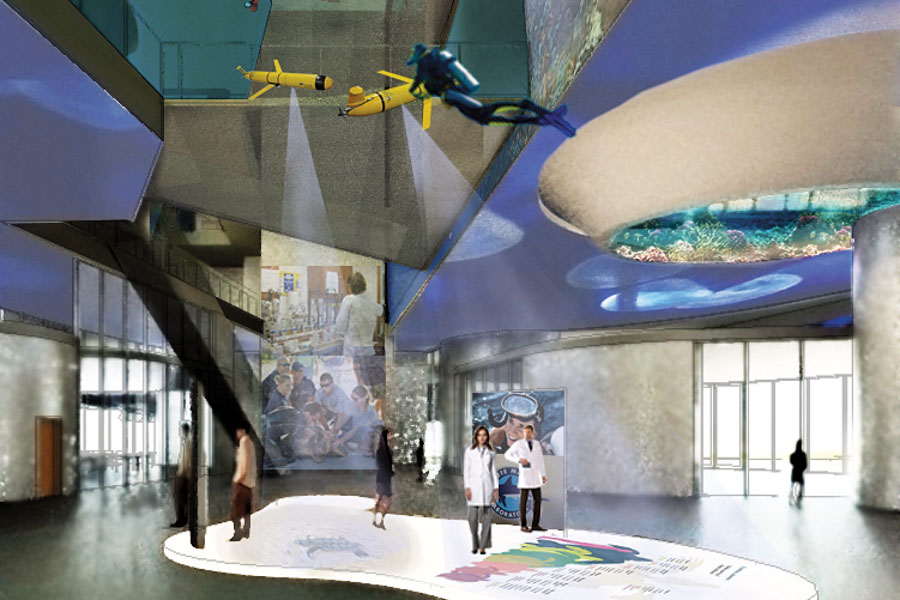
That Mote also wanted more of an aquarium site hasn’t been a secret for some time, and most anybody who ever visited the popular but rather remote location today might suspect as much without a hint. Mote Aquarium attracts more than 300,000 visitors every year, people who drive down a poorly paved road to find an easy-to-miss site between posh St. Armands Circle and the resort-heavy end of Longboat Key. Still, the beloved facility has been described as a regional gem since opening in 1980. Mote as a research facility existed on the Gulf Coast in some form dating back to 1955, but after moving to City Island in 1978, leadership there saw the opportunity for a facility aimed at public outreach, according to an official history by former Mote CEO Kumar Mahadevan. So while TV cameras gather each year to see who manatees pick to win the Super Bowl (Buffett called the Eagles victory this time as Hugh made a rare bad bet on the Pats), the scientists in the “Laboratory” side set themselves apart. Scientists there served as the chief researchers on ecological impacts from the BP oil spill, and Mote Marine became one of the only scientific institutions in America authorized to share work with counterparts in Cuba. And it housed the longest-running study ever on a wild dolphin population.
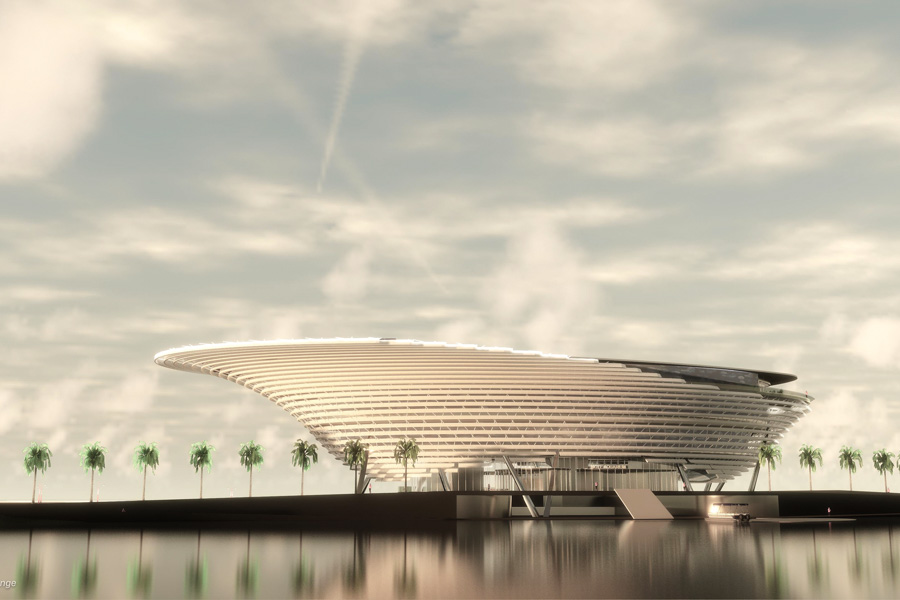
And it does this work with surprisingly little operating costs, Mote officials note. The scientists doing work at Mote don’t get paid by the institution but through outside grants or by universities paying them to do the work conducted in Sarasota or at five other facilities owned and operated by Mote. The relocation of the aquarium means more of that work will be done in Sarasota than ever. “The vision we have on City Island is what’s driving this whole thing,” Crosby says. “Our research enterprise and what we are envisioning beyond 2020 is an evolution of the campus into a major international marine science, technology and incubation park.” He sees the facility serving almost like a business accelerator for companies who work on ocean-related issues, growing from 35 research teams to 45. And he has no doubt the personnel will come to Sarasota. Already, Crosby had to tell two people begging for space at Mote to set up in Key West because the main headquarters had no room.
Much of the work done historically at Mote from a science-standpoint revolved around fisheries and aquaculture, elements which still remain vital to the local economy and will never go away, but in recent years more Sarasota research focused on cancer treatment, shark migration and any number of other areas. Also, while the City Island campus always provided certain challenges for a regional attraction, it’s ideal for oceanography. On a barrier island with access to the Gulf of Mexico on one side and Sarasota Bay on the other, researchers can study brackish and saltwater habitats and whatever passes between them using natural inlets.
Moving Out
That’s not to say there’s reason to ignore the “aquarium rebirth” at Benderson park as anything short of noteworthy. At a launch event, Crosby spelled out the future of the new Mote Science Education Aquarium (SEA), unveiling renderings by internationally celebrated architecture firm CambridgeSeven while launching a $130-million fundraising drive to cover both construction and associated soft costs with getting the facility up and running for an anticipated 2021 ribbon-cutting. Mote still has to work out a deal for leasing three to five acres of the county site. And they also plan to broach the subject of financial partnerships with Manatee and Sarasota counties and the related school districts.
The decision to move east rankled some political leaders in the city of Sarasota. City Commissioner Hagen Brody questioned the move after Mote enjoyed a $1 dollar annual lease with the city that dates back to 1986, and at a February city commission meeting publicly scolded City Manager Tom Barwin for not ensuring the aquarium ended up on Sarasota’s Bayfront. “This is a competition to keep these city assets in the City of Sarasota,” Brody says.
Barwin for his part says he’s been in communication with Mote for years. In 2014, Mote officials came to the city commission to ask for an endorsement of a Bayfront aquarium then. The board voted 3-2 at the time not to do so, saying the still-new Bayfront planning process needed to be completed before space was promised to any cultural institution. And entities like the Sarasota Orchestra and Van Wezel Performing Arts Hall voiced that, as long-time tenants of the Bayfront, they should have greater say in where new construction might occur on the property in the future.
Crosby says Mote considered five different locations for Mote SEA, the Bayfront among them. He wouldn’t go into details on all of them, but leaders around the Gulf Coast for years have discussed whether a new aquarium could open near such locales as Venice, Downtown Bradenton or the Phillipi Creek region. And Crosby acknowledges Mote considered locations as far off as Fort Myers and Naples.Barwin says the decision by Mote that the Bayfront wasn’t the most feasible property ultimately had to be made by the organization itself. Of course, the Bayfront offers certain limitations, such as height restrictions on new construction and challenges that come from being on the water.
County Commissioner Paul Caragiulo suggested an inland facility may make more sense for a new aquarium. “I know it seems like a no-brainer, put an aquarium on the water,” he says, “but it’s not that simple.” The needed infrastructure for a 3-million-gallon aquarium likely will call for 19 feet of underground foundation and physical equipment installation. To do that on an open and inland site such as Nathan Benderson Park will save costs on an undoubtedly expensive development.
And Crosby notes the location by a well-traveled highway will attract attention that simply can’t be gleaned from a facility downtown. “We see this as an amazing opportunity to introduce many new people to this community,” he says, also remarking that Mote remains one of the community stakeholders signed on long-term for the Bayfront planning process, and that the City Island facilities will remain opposite the waterfront for Sarasota Bay.
He also sees the aquarium’s growing educational capacity as a catalyst for STEM education that should benefit the whole region, hence the desire to partner with schools in Sarasota and Manatee. The work at City Island, he says, will create tech-based jobs in the city of Sarasota, while the aquarium lifts the science literacy of the wider public.
Incidentally, Crosby notes, the City Island aquarium isn’t the only public-facing facility Mote owns now. In the Florida Keys, Mote now runs a small aquarium in downtown Summerland, a sister facility to Mote’s Key West research center. That “ecodiscovery” center offers a small taste of marine research for visitors to the Keys, and opening an Mote SEA at Nathan Benderson Park in no way precludes the chance to open a small facility in Downtown Sarasota in the future.
“We are not leaving anyplace,” Crosby says. “This is about us growing and the community growing.”






